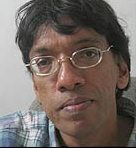The Continuing Divide Between What Is Required To Be Done And What Is Done
 In preparation for the forthcoming meeting of the UN Human Rights Council in Geneva the government has sent its top civil servant, Secretary to the President Lalith Weeratunga to Geneva to put the government’s achievements into perspective. Since 2012 when the government lost the vote at the UNHRC and had to face a resolution calling on it to implement post-war recovery and accountability measures, the government has been seeking to get the best communicators working for it. The government has even hired public relations companies in foreign countries at high rates in order to get its message across. As the person in charge of ensuring that the government implements the recommendations of the Lessons Learnt and Reconciliation Commission (LLRC) as mandated by the UNHRC resolution, the President’s Secretary is now being seen as the best person for the job.
In preparation for the forthcoming meeting of the UN Human Rights Council in Geneva the government has sent its top civil servant, Secretary to the President Lalith Weeratunga to Geneva to put the government’s achievements into perspective. Since 2012 when the government lost the vote at the UNHRC and had to face a resolution calling on it to implement post-war recovery and accountability measures, the government has been seeking to get the best communicators working for it. The government has even hired public relations companies in foreign countries at high rates in order to get its message across. As the person in charge of ensuring that the government implements the recommendations of the Lessons Learnt and Reconciliation Commission (LLRC) as mandated by the UNHRC resolution, the President’s Secretary is now being seen as the best person for the job.
According to the government media, during his visit to Geneva where he had briefed the international human rights community, the Presidential Secretary stressed that the Sri Lankan government has done all that was humanly possible to implement the National Plan of Action to carry out the LLRC recommendations since it was approved by the Cabinet of Ministers in July 2012. He had also detailed the action taken by the government over the past 18 months to give effect to the recommendations of the LLRC in the areas of international humanitarian law issues, human rights, land return and resettlement, restitution and compensatory relief and reconciliation. He used statistics to make the point that life in the former war zones of the North and East is on an upward curve.
The government affirms its success in the area of post-war recovery by focusing on its success in rebuilding the economy especially in the North and East and also in rehabilitating those who were victims of the war. The government points to its success in resettling those displaced by war in a relatively short period of time as compared to other countries. It shows facts and figures that put the number of those resettled in the hundreds of thousands. But what the international community wants is different. There continue to be exceptions that prove the rule that much more remains to be done, especially in terms of governance. An example is the village of Mullikulam in the Mannar district in the north of the country. It is a village that has fallen between the cracks of the government’s macro strategy of resettlement and reveals those key aspects of the LLRC that remain to be implemented.

